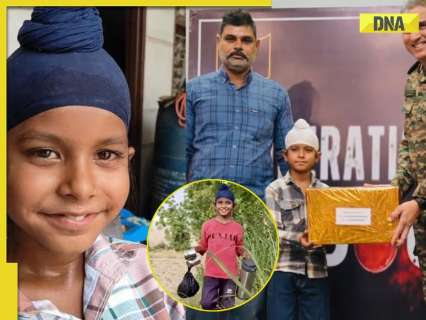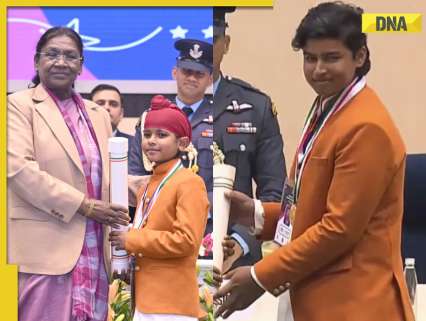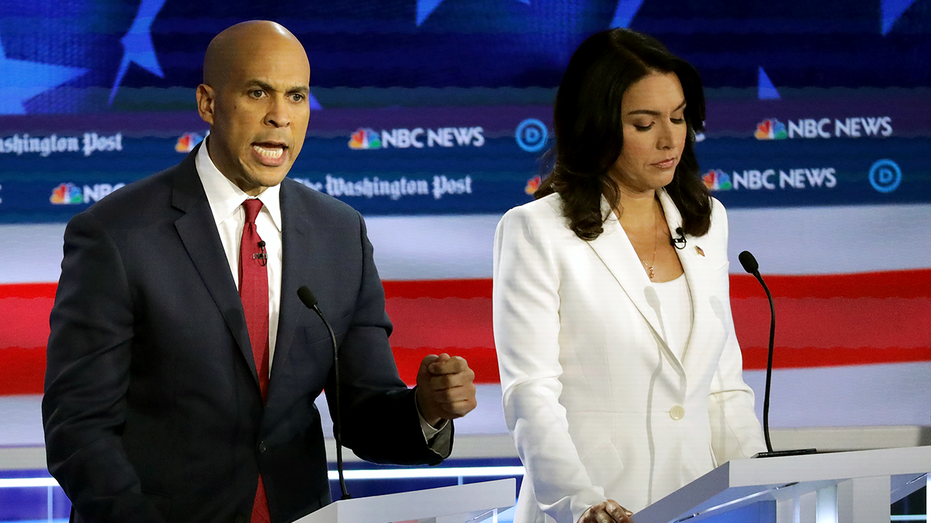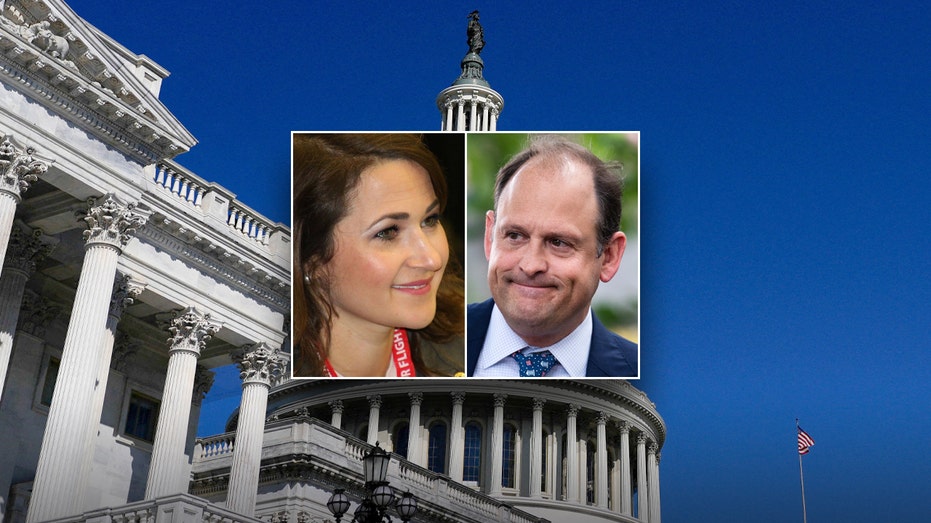Meet 10-year-old Op Sindoor hero who defied Pak’s drones to make high-risk runs to supply lassi, ice to soldiers, awarded with Pradhan Mantri Bal Puraskar

A 10-year-old boy Shavn Singh from Punjab’s Ferozepur has been awarded with Pradhan Mantri Rashtriya Bal Puraskar, which is India’s highest civilian honour for children. President Draupadi Murmu has presented him the award for his true humanity and patriotism.
Meet Mizoram’s 9-year-old patriotic singer who gained national attention with her viral ‘Vande Mataram’ performance, awarded India’s highest civilian honour for children

Esther Lalduhawmi Hnamte, a 9-year-old singing prodigy from Mizoram, gained national fame with her viral performance of ‘Vande Mataram.’ She was recently awarded the Pradhan Mantri Rashtriya Bal Puraskar for her contribution to music and culture, marking her as a rising star and a symbol of pride.
President Murmu confers PM Rashtriya Bal Puraskar to 20 children; check full list here

President Droupadi Murmu said that the award-winning children have brought pride to their families, their communities, and the entire country.
Delhi schools resume offline classes as air quality improves; check details

Classes for students up to Class 5 will be held in a hybrid mode. Check details below.
A look back at some of The Texas Tribune’s best reads of 2025

As 2025 draws down, the Tribune reflects on some of its most memorable storytelling of the year.
Minnesota Senate candidate wears hijab in visit to Somali market as fraud scandal unfolds

Minnesota Lt. Gov. and U.S. Senate candidate Peggy Flanagan was seen on a Somali TV station wearing a hijab at a mall, as a widespread fraud scandal implicating some Somalis plagues the state. “The Somali community is part of the fabric of the state of Minnesota,” Flanagan said, looking into the camera. For Muslim women, wearing a hijab is typically a sign of obedience to God and worn to show modesty. Flanagan has previously stated that she is Catholic and says on her campaign website that her “view on immigration is grounded in her Catholic faith.” ILHAN OMAR DEFENDS MEALS ACT DESPITE TIES TO MASSIVE MINNESOTA FRAUD SCHEME The lieutenant governor is challenging two other Democratic candidates in the primary race to fill the seat of outgoing Democratic Sen. Tina Smith. Former Democratic presidential candidate and current Sen. Amy Klobuchar serves as the other senator from the state. Flanagan’s far-left views also prompted her to wear a “Protect Trans Kids” shirt with a knife on it in August in a viral video telling parents: “When our children tell us who they are, it’s our job as grown-ups to listen and believe them.” In 2022, federal prosecutors in the U.S. Attorney’s Office in Minnesota began probing a nonprofit called Feeding Our Future, an organization which fueled what the Justice Department said is one of the largest pandemic relief fraud schemes in history. ‘EPICENTER OF FRAUD’: MINNESOTA’S EMPTY STOMACHS, FAKE AUTISM THERAPY AND A SCANDAL THAT COULD TOP $2 BILLION Since the investigation began, $250 million in fraudulent claims have led to 78 individuals charged as part of what prosecutors say is a sizable $9 billion fraud scheme. Many of the individuals charged come from the Somali community in Minnesota. More than 400 Minnesota state employees spoke out about the issue, pointing fingers at former vice presidential candidate and Democratic Gov. Tim Walz for negligence in acting on warnings and indicators of fraud and retaliation against whistleblowers who attempted to expose the scandal. LAWMAKERS PROBE SBA LOANS LINKED TO MINNESOTA’S $9B FRAUD SCANDAL: ‘RECKLESS DECISION MAKING’ Walz has been pushed to address the issue on several occasions, admitting in a New York Times interview that the programs may have been overly generous. “The programs are set up to move the money to people,” Walz said last month. “The programs are set up to improve people’s lives, and in many cases, the criminals find the loopholes.” Walz set up a new anti-fraud task force as part of a crackdown. “The message here in Minnesota is if you commit a crime, if you commit fraud against public dollars, you are going to go to prison,” he told the Times. The House Oversight Committee launched an investigation into Walz’s handling of the relief program at the beginning of December. “This massive amount of fraud is affecting and impacting every citizen of Minnesota because they’re having to cut services because so much of the money for social programs was wasted and defrauded by this Somali population,” House Oversight Chairman James Comer, R-Ky., told Fox News’ “America’s Newsroom” earlier this week. Comer plans to subpoena testimony and records, setting the stage for a potential blockbuster hearing. President Donald Trump took swift action when the news broke and terminated deportation protections for Somali nationals living in Flanagan’s state “effectively immediately” in November after news of the fraud scandal broke. “Send them back to where they came from,” Trump posted to Truth Social. “It’s OVER!” Fox News Digital reached out to Flanagan and Walz but did not receive responses.
Most radical courses, curriculum that received federal funding in 2025

Over the past year, Fox News Digital has reported extensively on far-left curriculum and courses at universities across the country, many of which have sparked pushback from conservatives and parents’ rights groups. This month, leaked PowerPoint lessons from a first-year education course at the University of Illinois Urbana-Champaign showed extreme left-wing bias on the topic of illegal immigration, as well as race and gender along with material that blamed President Trump for “white supremacy.” Fox News Digital reported in early October on another college classroom controversy at the University of Oklahoma where a student who received a zero out of 25 on an assignment regarding gender norms says she was targeted for her Christian beliefs, citing a scathing response from the teacher’s assistant who doled out the grade. This week, that teacher’s assistant was fired by the university. CLICK HERE FOR MORE CAMPUS RADICALS COAST TO COAST At the University of Minnesota, Fox News Digital was first to report on a situation uncovered by Defending Education in which the university hosted a webpage warning against a “whiteness pandemic” that provides “resources” on how to “halt and reverse” the issue. “If you were born or raised in the United States, you have grown up in the Whiteness Pandemic, and you can play a role in halting and reversing this pandemic, especially if you are White because of the power and privilege you hold in this racialized society,” explains the University of Minnesota-Twin Cities webpage, which is part of the Institute of Child Development. “If you were socialized into the culture of Whiteness during childhood, it is not your fault, but as an adult it is now your responsibility to self-reflect, re-educate yourself, and act. If you are a White adult, antiracist action involves an ongoing process of self-reflection in order to develop a healthy positive White identity while engaging in courageous antiracist parenting/caregiving.” WATCH: HIDDEN CAMERA CATCHES RED-STATE UNIVERSITY ADMINS ADMITTING HOW THEY ‘CLEVERLY’ DISGUISED DEI AGENDA The university stood by the curriculum, citing a “commitment to the principles of academic freedom.” The Texas A&M University System Board of Regents released a statement in September, Fox News Digital reported, calling for an audit of all of its courses after a student was allegedly removed from a class for questioning transgender-related course content. In the deep red state of Arkansas, Fox News Digital reported that a public university offers an interdisciplinary writing course in its English department called “Queer Childhoods,” according to the school’s course directory. The course focuses on “evaluating academic arguments and on writing papers that make an argument and that utilize scholarly sources,” says a vague description of the offering on the University of Central Arkansas’ website. “The course is thematic, with instructors choosing topics and choosing an interdisciplinary set of readings focused on that topic.” At Princeton University earlier this year, Fox News Digital reported, the school offered a course where students would study the intersection of gender studies and what the course called the “genocide” in Gaza. “This seminar explores genocide through the analytic of gender, with a central focus on the ongoing genocide in Gaza,” said the course description on Princeton’s website. “Drawing on decolonial, Indigenous, and feminist thought, we examine how genocidal projects target reproductive life, sexual and familial structures, and community survival.” A student at the University of North Georgia spoke out to Fox News Digital, saying that an assigned textbook for one of her courses labeled Christianity as a “U.S.-based white supremacist group.” Kelbie Murphy, a senior at the university, paid roughly $100 for an assigned textbook in her International Public Relations course. In Chapter 8, the opening passage reads: “An internet search produces the following modifier for identity: corporate, sexual, digital, public, racial, national, brand, and even Christian (a U.S.-based white supremacist group).” “The way it was worded, it listed several marginalized groups, but then only called Christians to be White supremacists,” Murphy told Fox News Digital in an exclusive interview. “But the scariest thing is that the book was written in 2007.” At the start of the year, Fox News Digital reported exclusively that the Department of Education has awarded over $200 million since 2021 to forty-eight universities injecting DEI content into counseling courses that include topics on antiracism, microaggressions, White privilege and Whiteness. Fox News Digital’s Peter D’Abrosca and Preston Mizell contributed to this report.
Pro-police group asks DOJ to probe Soros-backed Virginia prosecutor using Biden-era law once aimed at cops

EXCLUSIVE: A pro-police group will request the Justice Department investigate a Virginia prosecutor accused of being unfairly lenient to illegal immigrant suspects, using an oversight law the Biden administration used to scrutinize police departments like one in Kentucky after the Breonna Taylor incident. The law enforcement “pattern-or-practice” provision, under 34 USC 12601, was previously used to investigate alleged civil rights violations during the Biden era by police departments — including in Louisville after a no-knock warrant was served, leading to a shootout that killed Taylor. It has also been used against departments in New Jersey, Mississippi and Tennessee, as well as a division of the NYPD, for allegations ranging from excessive use of force, to gender bias and allegedly unlawful traffic stops. VIRGINIA AG CALLS DEM PROSECUTOR’S ACTIONS ‘WEAPONIZED INCOMPETENCE’ IN SCATHING REPORT On Wednesday, the Law Enforcement Legal Defense Fund (LELDF) told Fox News Digital it would ask the Trump Justice Department to use the same law in a different respect to investigate progressive Fairfax County Commonwealth’s Attorney Steve Descano in Virginia. Descano, who received at least $600,000 from a George Soros-funded political action committee during his first election bid in Virginia’s largest jurisdiction in 2019, came under fire recently for the nonprosecution of an illegal immigrant who allegedly murdered someone the day after he was released. LELDF’s request “seeks to use established federal civil-rights tools to test whether a prosecutor’s office is operating a discriminatory system that endangers the public and erodes equal justice under law,” the group’s president, Jason C. Johnson told Fox News Digital. LELDF officials will formally ask Deputy Attorney General Harmeet Dhillon to investigate Descano’s office under the same “pattern-or-practice” concerns as Biden’s DOJ had in Louisville. The group alleged the Fairfax Commonwealth’s Attorney’s Office “violat[ed] the civil rights of US citizens by favoring illegal aliens and non-citizens in charging, plea bargaining, and sentencing decisions.” They cited Descano’s “official policy” to consider “immigration consequences” when prosecuting cases. “As a federal prosecutor, Steve protected immigrants from criminals who targeted them due to their immigration status… Steve knows that regardless of immigration status, all our neighbors deserve equal protection of, and equal access to, the law,” a passage on Descano’s campaign page reads. “The fear of law enforcement that Donald Trump has fostered in immigrant communities does nothing but lead to increased crime,” Descano claimed in backing up his policy. “In addition to providing a safe place, Steve’s office will take immigration consequences into account when making charging and plea decisions. Although prosecutors typically refer to immigration consequences as ‘collateral consequences,’ avoiding the unnecessary destruction of families and communities will be a top priority for Steve as Commonwealth’s Attorney. Wherever possible, Steve will make charging and plea decisions that limit or avoid immigration consequences.” That type of prosecutorial discretion runs afoul of the law, LELDF claimed in their letter to Dhillon. SEARS DEMANDS RECALL OF FAIRFAX PROSECUTOR AFTER ATTEMPTED KIDNAPPING CASE They pointed to the case of Marvin Morales-Ortez, who reportedly had first-degree murder charges stemming from a 2019 incident dropped by Descano’s office — which in turn told Washington’s ABC affiliate their evidence showed it was “clear that he was ultimately not the perpetrator who had killed Mr. [Jose] Guillen Mejia.” Nick Minock, a reporter for the outlet, later obtained a transcript of Morales-Ortez’ preliminary hearing where Descano’s office posited that Morales-Ortez was present when Guillen Mejia was murdered and had ambushed the man on a walking path. A short time after he was released, Morales-Ortez allegedly went to a home on Fan Shell Court in Reston, Va. — near John F. Dulles International Airport — and allegedly shot a man inside. That chain of events enraged the Trump administration, with Assistant DHS Secretary Tricia McLaughlin saying that “Fairfax County politicians [who] push[ed] pushing policies that released this illegal alien from jail” have “blood on their hands.” In the letter, LELDF argued that “dozens of illegal aliens like Morales-Ortez have repeatedly received excessive leniency from [Fairfax] under Commonwealth’s Attorney Steve Descano.” They pointed directly to a passage in a 2020 memo from Descano laying out similar to his campaign page that “[Assistant Commonwealth’s Attorneys] shall consider immigration consequences where possible and where doing so accords with justice.” LELDF claimed the memo and the policy it forwards directly violates the Constitution and denies U.S. citizens equal protection under the law versus illegal immigrants. “It is both immoral and unlawful for a government agency to engage in systemic discrimination against U.S. citizens to the benefit of those illegally present,” the group told Dhillon. The memo represents the necessary predicate for a federal investigation, they argued, while also taking issue with Fairfax’s “explicit policy directing prosecutors to weigh immigration consequences, including deportation’s ‘detrimental impact’ on families and communities, while ensuring no better outcomes than for non-immigrants.” In a fuller excerpt from the memo, Descano says that when the seriousness of an offense and its harm is significant, the weight of “potential adverse immigration consequences” should be “minimal,” while the opposite is true for “less serious” offenses and those with “no identifiable victim.” In those cases, subordinate prosecutors should “have greater latitude in negotiating a resolution that takes adverse immigration consequences into account.” While his office did not offer comment in response, Descano has also bristled at the notion of being tied to Soros — recently hitting back at a top Youngkin administration official who blamed prosecutors linked to the Hungarian-American financier for the crime crisis. “I’m not a ‘Soros funded prosecutor’, I’m the CA for Fairfax County – where the murder rate is 75% lower than the entire Commonwealth’s. Maybe [she] should look at the numbers (especially since she works in public safety) before making such a ridiculous claim,” Descano tweeted in 2022. Descano’s office said prosecutors dropped a malicious wounding charge from this year because they claim there was insufficient evidence to move forward with a criminal case, since the victim had moved out of the country. “The victim told police that they had moved out
Booker says Gabbard ‘endangering’ NJ with remarks on radical Islam, heavily Muslim city; deputy responds

Sen. Cory Booker and the top U.S. counter-terrorism official sparred Tuesday over DNI Tulsi Gabbard’s reference to Paterson, New Jersey’s Muslim community during her speech to AmericaFest earlier this week. Booker, D-N.J., took issue with part of director of National Intelligence Tulsi Gabbard’s speech to AmericaFest in Phoenix over the weekend, where she called out threats to the U.S. homeland from Islamist ideology. Booker ripped Gabbard for name-dropping his state’s third-largest city, Paterson. The city, between New York City and the Delaware Water Gap, is named for Irish immigrant and Constitution signatory William Paterson but has a sizable, growing Arab Christian and Muslim community. TEXAS GOV ABBOTT DECLARES CAIR, MUSLIM BROTHERHOOD AS TERRORIST GROUPS, PREVENTING LAND PURCHASES “Paterson is one of New Jersey’s oldest cities and has always embodied the best American values — industry, perseverance, and diversity,” Booker tweeted Tuesday. “Tulsi Gabbard’s dangerous attempt to sow fear, pit people against each other, and smear the Muslim Americans of Paterson, NJ is dishonest, cruel, and un-American — it endangers an entire community,” said Booker, who hails from nearby Newark. Paterson reportedly has the second-highest percentage of Muslims behind Muslim-majority Hamtramck, Michigan. Paterson’s sister city is Ramallah, in the Palestinian West Bank, according to WKXW. MUSLIM CIVIL RIGHTS GROUP CAIR SUES TEXAS OVER ABBOTT’S ‘TERRORIST’ DESIGNATION “In Jersey, we know our state’s diversity is our strength, and we stand up for our own,” Booker said. During her speech, Gabbard warned that Islamist ideology fuels terror groups that should be defeated “militarily” but also presents a “direct threat to freedom” because it is effectively “political” thought. Gabbard warned that such ideology is both political and a direct threat to freedom because it seeks to “create a global caliphate that governs us here in America” and seeks enforcement of Sharia Law governance. 2021 AFGHAN REMARKS HAUNT GOP LAWMAKER’S SENATE BID AFTER DC GUARD SHOOTING “If you fail to comply, if you fail to adhere to this ideology, if you dare to exercise your God-given right to free speech, censorship is not what we face. They will use violence or any means they deem as necessary to silence us,” Gabbard warned during her Phoenix address, before noting that German cities have canceled Christmas festivals due to the threat of radical Islamists; warning some may be taking root in America. “In places like Dearborn, Michigan, and Minneapolis, Minnesota, Islamist clerics are openly pushing this Islamist ideology, trying to recruit and radicalize young people,” she went on, saying that advocacy-group-backed efforts to institute Sharia law are already in place in Houston, Texas, and Paterson, New Jersey. “Paterson is proud to call themselves the first Muslim city. They are working to implement in their own governments these Islamic principles that are forced on people through the use of laws or violence,” she said. BONDI WARNS OF VETTING FAILURES AFTER ‘FRIGHTENING’ ARREST OF AFGHAN NATIONAL FOR BOMB THREATS IN TEXAS “The bottom line is this. When we talk about the threat of Islamism, this political ideology, there is no such thing as individual freedom or liberty. As Charlie [Kirk] said over and over again, it is fundamentally incompatible with our nation’s foundation of freedom.” Paterson, which has struggled for years with crime and corruption problems — including the indictment of Councilman Michael Jackson and others on pending election fraud charges, collectively rebuked Gabbard’s claim that its Muslim community posed any kind of threat. Mayor Andre Sayegh, a Democrat, called Gabbard “egregiously misinformed” at a press conference called to rebuke the former Hawaii congresswoman. CRUZ ‘CANNOT SUPPORT’ TRUMP’S KUWAIT AMBASSADOR PICK OVER MUSLIM BROTHERHOOD REMARKS “We’re a better city because Muslims call Paterson home. It’s a point of pride that they contribute to the social and economic fabric of Paterson,” he said. In terms of laws passed in Paterson, in 2020, the city council approved an ordinance allowing the Adhan — or Muslim call to worship — to be broadcast in the city. Imam Quddoos Farra’d told the Paterson Times that it is no different from Christians using churchbells or Jews using a Shofar. However, National Counterterrorism Center Director Joe Kent, a Washington state Republican nominated by President Donald Trump, staunchly defended Gabbard and slammed Booker. DNI GABBARD WARNS ‘ISLAMIST IDEOLOGY’ THREATENS WESTERN FREEDOM AT AMFEST “The insane policies championed by Booker and the Democrat Party under the Biden administration have allowed a staggering 18,000 known and suspected terrorists to enter our nation, many through the botched Afghanistan withdrawal and the open southern border,” Kent said. “This disastrous approach has put American lives at risk, prioritizing unchecked borders over national security.” “In the last year, Muslim jihadis have carried out successful attacks in New Orleans, Colorado, and Washington D.C., spreading terror from coast to coast, while our dedicated law enforcement heroes have thwarted over a dozen more jihadist plots, preventing even greater devastation.” Kent said it was Gabbard who exposed threats from 2,000 Afghan evacuees under Biden’s Operation Allies Welcome who had ties to terrorism — and that the DNI is “confronting the dangers recklessly inflicted on our nation by cowards like Booker and Biden.”
Kentucky congressman announces death of longtime aide and campaign manager

Rep. Andy Barr, R-Ky., announced the death of his longtime aide and campaign manager on Christmas Day, a passing which “shocked” those who knew her during the holiday. The congressman and Senate candidate posted about the passing of his deputy chief of staff and campaign manager Tatum Dale on Thursday, noting the contributions she made not only to his current office, but to his mission to serve in statewide office. “For over 15 years, Tatum was the heart and soul of my team,” Barr posted to X. “With Tatum’s leadership, my office favorably closed thousands of cases for Kentuckians—helping veterans, seniors, and families throughout our district. She fought to deliver funds to support dozens of community projects across our Commonwealth.” “She loved helping people and was a servant of others, just as Christ envisioned us all to be. Maybe that’s why her birth in heaven is a shared birthday with our Lord and Savior,” Barr continued. “While our hearts are broken, our team finds peace and hope knowing that Tatum is now home with Christ, resting comfortably in the arms of her Savior.” 2021 AFGHAN REMARKS HAUNT GOP LAWMAKER’S SENATE BID AFTER DC GUARD SHOOTING Barr’s run to succeed Sen. Mitch McConnell, who announced his retirement in February, has been a battle between GOP candidates in the early stages of the race. Despite the competition, former Kentucky attorney general and gubernatorial candidate Daniel Cameron set aside their differences to weigh in on the passing of Dale. “Tatum Dale was a friend,” Cameron posted on social media. “She will be truly missed.” ‘AMERICA FIRST’ ATTORNEY GENERAL DISTANCES HIMSELF FROM MCCONNELL — HIS FORMER BOSS — AS KENTUCKY RACE DEFINES GOP FUTURE “Makenze and I will be praying for her family and all of Team Barr,” Cameron added. Cameron’s post was joined by several others who posted to social media in remembrance of the staffer. GOP strategist and communications director for Montana Governor Greg Gianforte said he was shocked by the news and that “Tatum was one of those hardworking people who seemed to be at every GOP event.” GOP REP GEARS UP FOR POTENTIAL REMATCH AGAINST PROGRESSIVE ‘DARLING’ IN BID TO SUCCEED MCCONNELL Dale originally joined Barr’s Washington, D.C., office in 2013 as a scheduler. She then returned to Kentucky, where she served as a district representative, field operations director, district deputy director, district director and deputy chief of staff. She was born in Murray. Kentucky, and attended the University of Kentucky, according to Barr. The cause of death is not currently clear. “She made me a better Congressman, our staff better public servants, and we will all miss her forever,” Barr posted. “From Murray to Lexington and everywhere in the Commonwealth that she touched, we hope you will all join us in praying for Tatum’s family and friends—and be forever inspired by her memory to serve others.” Fox News Digital reached out to Barr’s office for comment.

